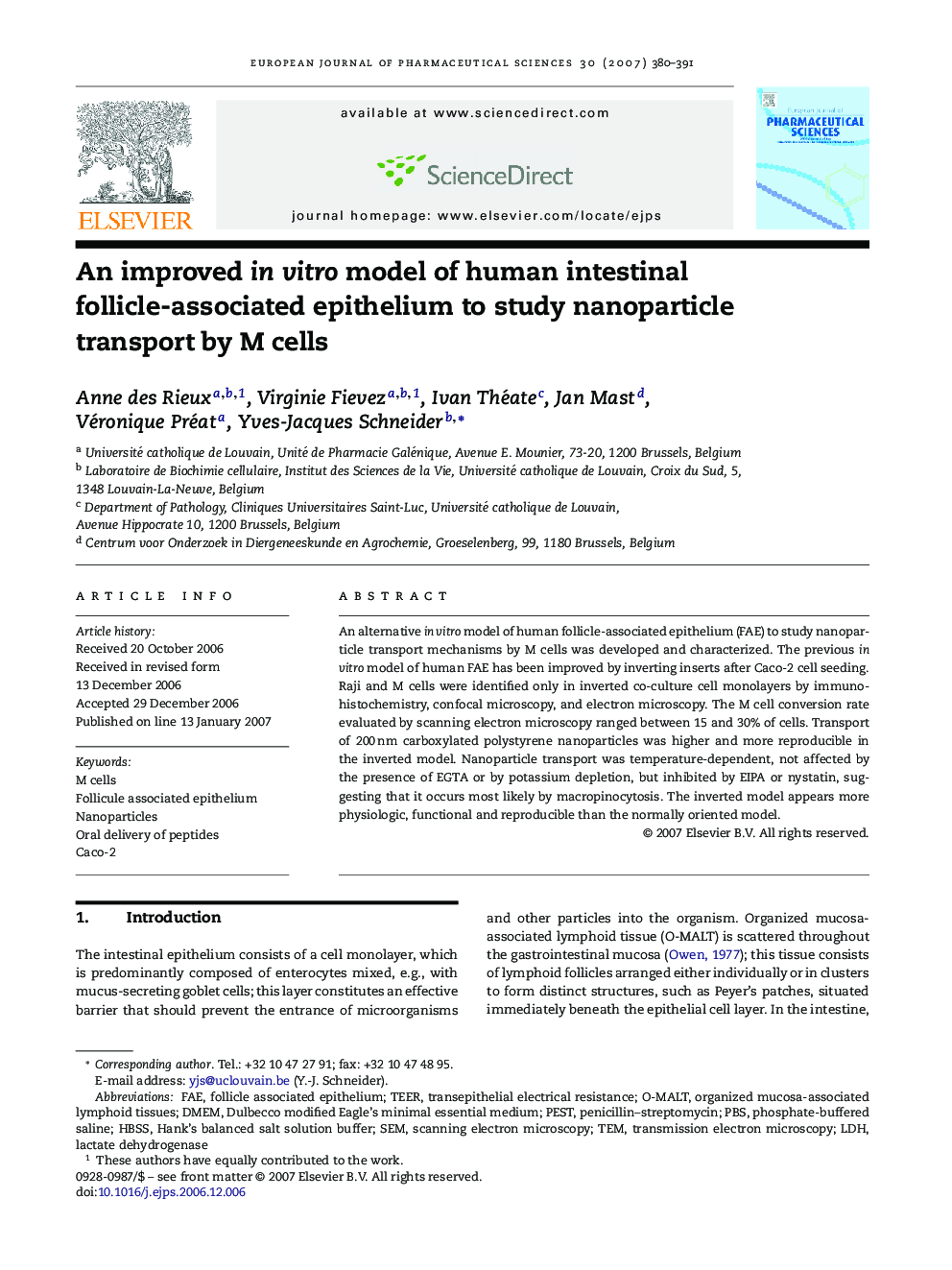| Article ID | Journal | Published Year | Pages | File Type |
|---|---|---|---|---|
| 2482123 | European Journal of Pharmaceutical Sciences | 2007 | 12 Pages |
An alternative in vitro model of human follicle-associated epithelium (FAE) to study nanoparticle transport mechanisms by M cells was developed and characterized. The previous in vitro model of human FAE has been improved by inverting inserts after Caco-2 cell seeding. Raji and M cells were identified only in inverted co-culture cell monolayers by immunohistochemistry, confocal microscopy, and electron microscopy. The M cell conversion rate evaluated by scanning electron microscopy ranged between 15 and 30% of cells. Transport of 200 nm carboxylated polystyrene nanoparticles was higher and more reproducible in the inverted model. Nanoparticle transport was temperature-dependent, not affected by the presence of EGTA or by potassium depletion, but inhibited by EIPA or nystatin, suggesting that it occurs most likely by macropinocytosis. The inverted model appears more physiologic, functional and reproducible than the normally oriented model.
